TRIFECTA's Active Rail Pressure Management
Introduction – Direct Injection
Over the last 10 years, General Motors (GM) has been converting all of their engines to use what they call SIDI (Spark Ignited Direct Injection), oft referred to as just DI (Direct Injection). DI promises improved fuel economy, improved engine power and lower vehicle emissions versus the traditional MPFI (Multi Point Fuel Injection) that has been in use since the late 1980s on General Motors vehicles.
However, DI equipped engines present unique challenges for those wishing to modify and increase the power output of their vehicles while maintaining proper operation. TRIFECTA is a leading manufacturer of aftermarket calibrations (tuning) for DI engines and has consistently been the pioneer of technologies that allow greater power output from DI based vehicles. One of those technologies is called Active Rail Pressure Management. To understand why it's a critical part of calibration work when working outside the design specifications of a DI engine, let's first dig into how DI works.
Direct Injection – how does it work?
Since the introduction of DI on the 2007 Pontiac Solstice GXP and 2007 Saturn Sky Redline, GM's implementation of DI has generally followed the same architecture.
DI fuel systems work very similarly to diesel direct-injection systems in that the fuel injector, which provides fuel for combustion, is located in the cylinder head and feeds the fuel pulse directly into the combustion chamber for a given cylinder. This is in contrast to MPFI systems which use a fuel injector (for each cylinder) typically located in the intake manifold, just prior to the intake valve.
On a simple level, DI systems utilize the following components:
1. Fuel tank (fuel storage) and fuel filter
2. Low pressure fuel pump and pressure regulator (generally 40-70psi)
3. High pressure fuel pump and pressure regulator (up to 3000psi)
4. DI fuel rail and DI fuel injector (one per cylinder)
Fuel stored in the tank is pressurized to a low pressure, and provides the fuel to the high pressure pump. The high pressure pump raises the fuel pressure and delivers it to the DI fuel rail, and ultimately, the DI fuel injector. The low pressure pump is the same type that's used in typical MPFI systems. It's an electric pump and uses a closed-loop pressure control system, with a discrete ECU (either a chassis control module, or a fuel pump control module) to manage the low pressure side pressure and flow rate.
The high pressure pump is a mechanical pump, which, much like in a diesel engine, is driven mechanically. Diesel engine pumps may use a variety of drive mechanisms, but the gasoline DI engines use a camshaft as the drive mechanism. Pressure (and, in later models, fuel temperature) is monitored by the ECM (engine control module), and the pressure is controlled by the ECM as well. Fuel injector timing and pulsewidth is calculated in part by the ECM's calibration, and in part by the immediate fuel demands of the engine. All of these inputs and outputs are calculated thousands of times per second to ensure precise fuel delivery.
Fuel injector flow rate, low pressure pump, and high pressure pump capacities are carefully calculated by GM engineers to provide adequate fueling (within certain operational margins) under all operating conditions. However, the aftermarket is focused specifically on increasing the power output beyond factory specifications. DI can pose unique challenges in this regard.
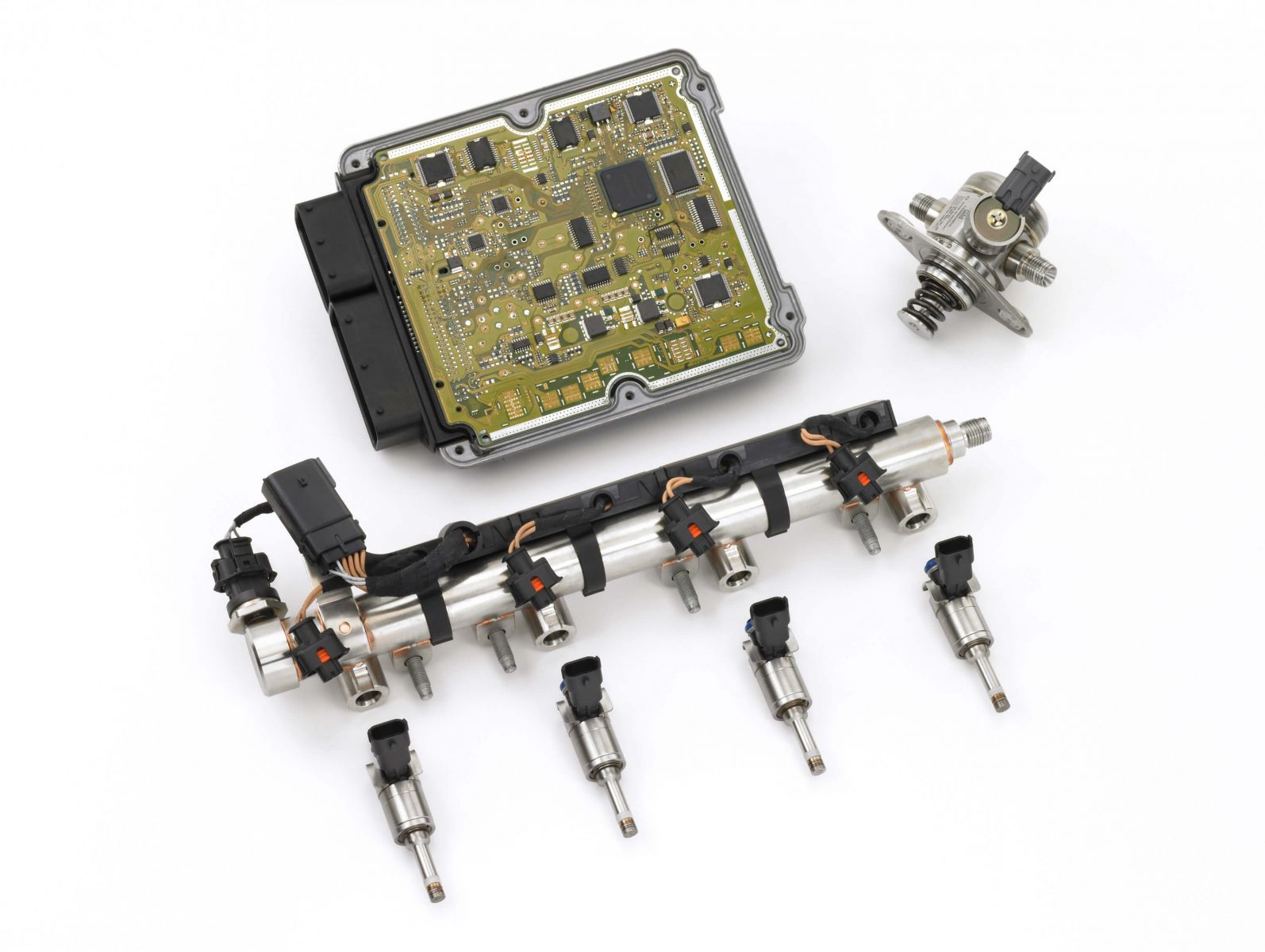
(2.0T LNF ECM, Fuel Rail, High Pressure Fuel Pump - Source: GM Media)
Concerns with raising fuel demands of the DI engine
On MPFI equipped vehicles, addressing increased fuel demands (due to increasing supercharger or turbocharger boost levels, utilization of ethanol blends of fuel, utilization of “richer” fuel mixtures, and/or adding forced induction) was largely centered around ensuring the low pressure pump can provide adequate fuel volume and that the fuel injectors themselves could provide this increased fuel volume quickly enough.
Fueling an engine using DI, however, poses some unique challenges compared to MPFI, the two largest being:
1. DI systems, due to their design have a much smaller “window” of time during which fuel can be injected optimally.
2. Partly due to #1, and also because the fuel pressure must be higher than the combustion chamber pressures, DI systems must operate at relatively high pressures vs MPFI systems which must only overcome the intake manifold pressures.
It's not enough on a DI engine to just increase the fuel injector size, and the volume of fuel that can be provided by the low pressure pump like it is with an MPFI system, and in many cases, neither of these are the first limiting factor DI engines with power adders run into. Quite often, the high pressure pump's ability to provide sufficient fuel volume at sufficient pressure becomes the limiting factor. This is why the aftermarket tuners are so concerned with “fuel rail pressure” levels (e.g. the pressure of the fuel in the rail just prior to the fuel injector under high loads).
Modifications, whether they be software, or hardware (or both), which cause the fuel rail pressure to fall short can lead to fueling errors (both fuel quantity and injection timing events), which can lead to possible engine destruction. Engine destruction is actually rare, though, because improper fuel rail pressure generally causes the engine to run at drastically reduced power levels. The design of DI is inherently self-limiting this way.
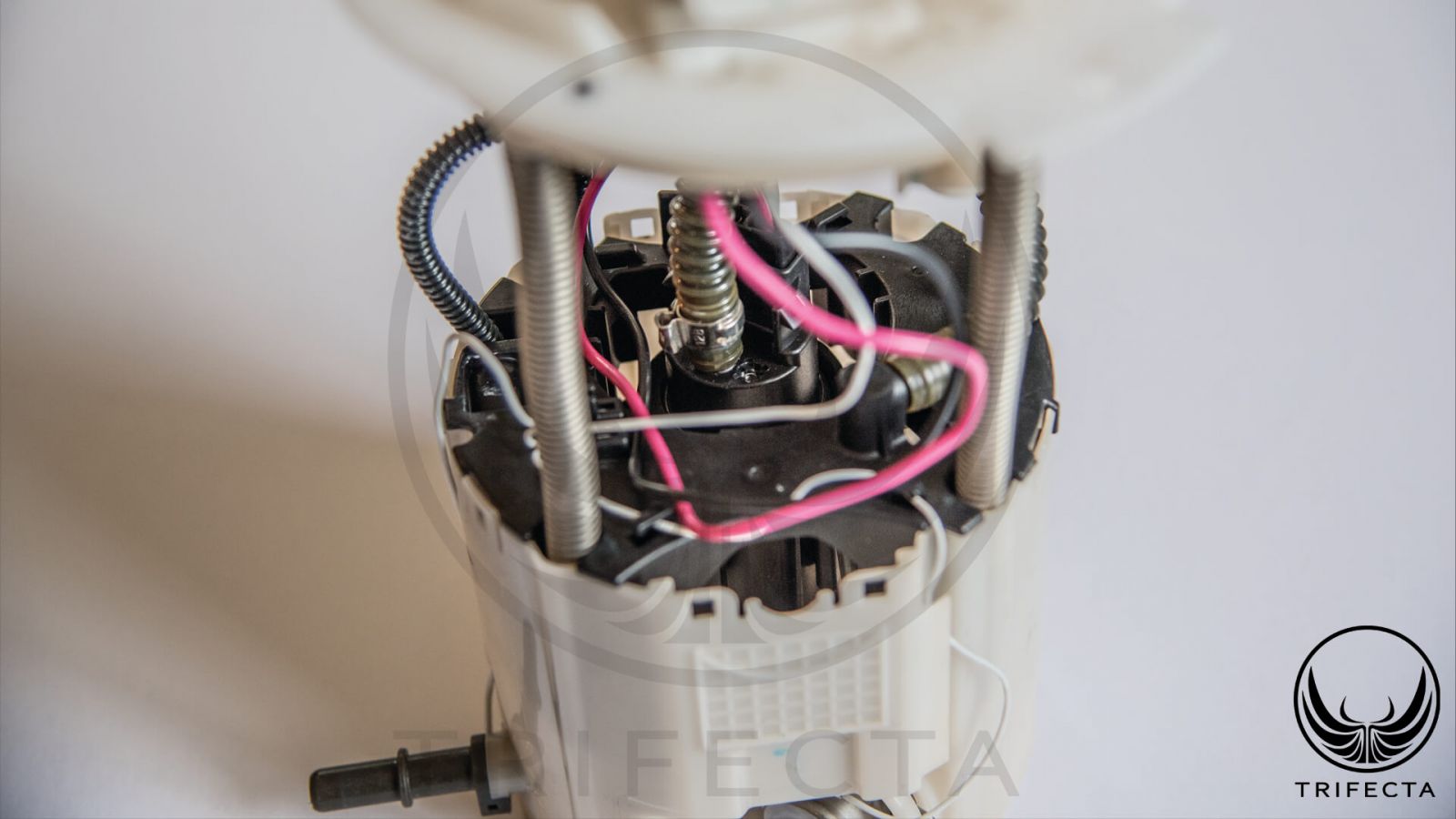
(2.0T LTG Low Pressure Fuel Pump)
The relationship of injection timing, fuel pulse width and fuel rail pressure
With GM's DI implementation, an injection event begins with two basic calibrated parameters – the desired fuel rail pressure, and the DESIRED start of injection angle (relative to the piston's position in the cylinder, in degrees). The ECM references certain tables in its calibration and then commands the high pressure pump to provide a DESIRED rail pressure for the specific operating conditions at the time.
Next, the ECM first determines the immediate fuel demand. This is largely a dynamic factor of the amount of air entering the cylinder, and the commanded air to fuel ratio. Once the ECM calculates the required fuel volume, it checks the ACTUAL rail pressure (which should be the same as the DESIRED rail pressure) to calculate how long the injector needs to be opened for (the injector pulse width) to provide the required fuel volume.
Finally, the ECM determines when to open the injector (ACTUAL start of injection angle). In a perfect world, again, this would be the same as the DESIRED start of injection angle.
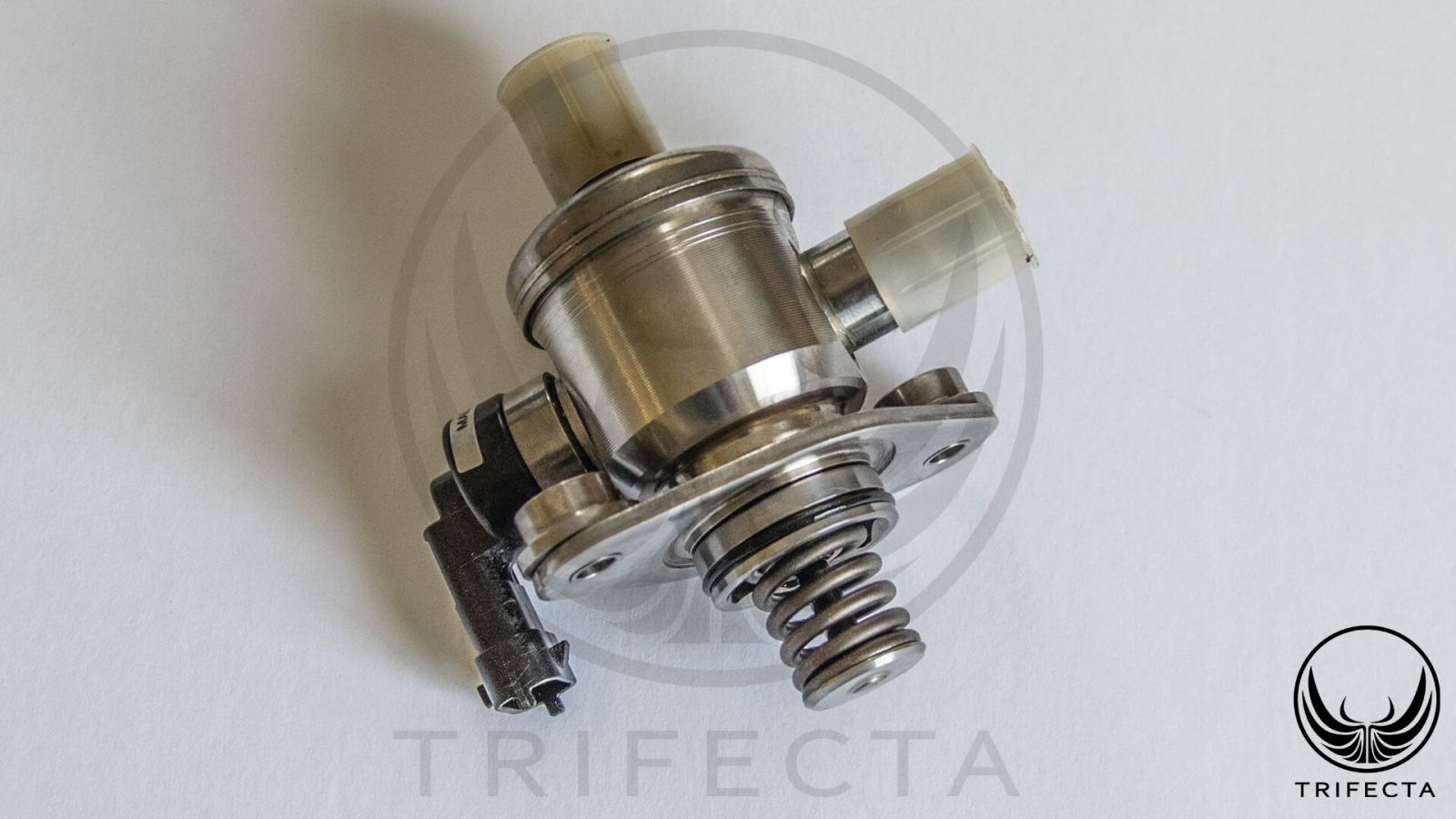
(3.6L LFX High Pressure Fuel Pump)
Dynamic compensation of fuel injection start angle
Unfortunately, it's not always a perfect world. Here's a list of certain scenarios where the ACTUAL start of injection angle may not be the same as DESIRED:
1. The engine's fuel demands are higher (due to increased airflow, a richer fuel mixture, and/or variances in operating conditions) than they were at the time the rail pressure and injection timing tables were calibrated originally.
2. The ACTUAL fuel rail pressure is less than the DESIRED fuel rail pressure.
3. The commanded ignition timing (spark advance) is more advanced than it was when the rail pressure and injection timing tables were calibrated originally.
4. There's been a malfunction of the fuel control system (mechanical or electrical).
The ECM has been designed to know that the end of the injection pulse must occur before the spark plug ignites. It knows (in degrees before top dead center) when it's going to ignite the spark plug, so it determines that the end of the pulse must occur before the plug ignites, plus a certain margin.
It also knows by now how long the injection pulse is going to be, and can calculate, based on engine RPM at the time, when the injection pulse must begin. It will use the DESIRED injection start angle as long as the pulse will complete by the time it needs to. However, the ACTUAL injection start angle used may be earlier because of these compensatory factors.
Skewing of the injection start angle is normally not a problem (on an unmodified vehicle being operated within its design parameters), and this process is designed to be dynamic. Extensive self-diagnostics performed by the ECM will detect systemic failures and employ safety measures to avoid engine failure and/or potential vehicle operation safety issues.
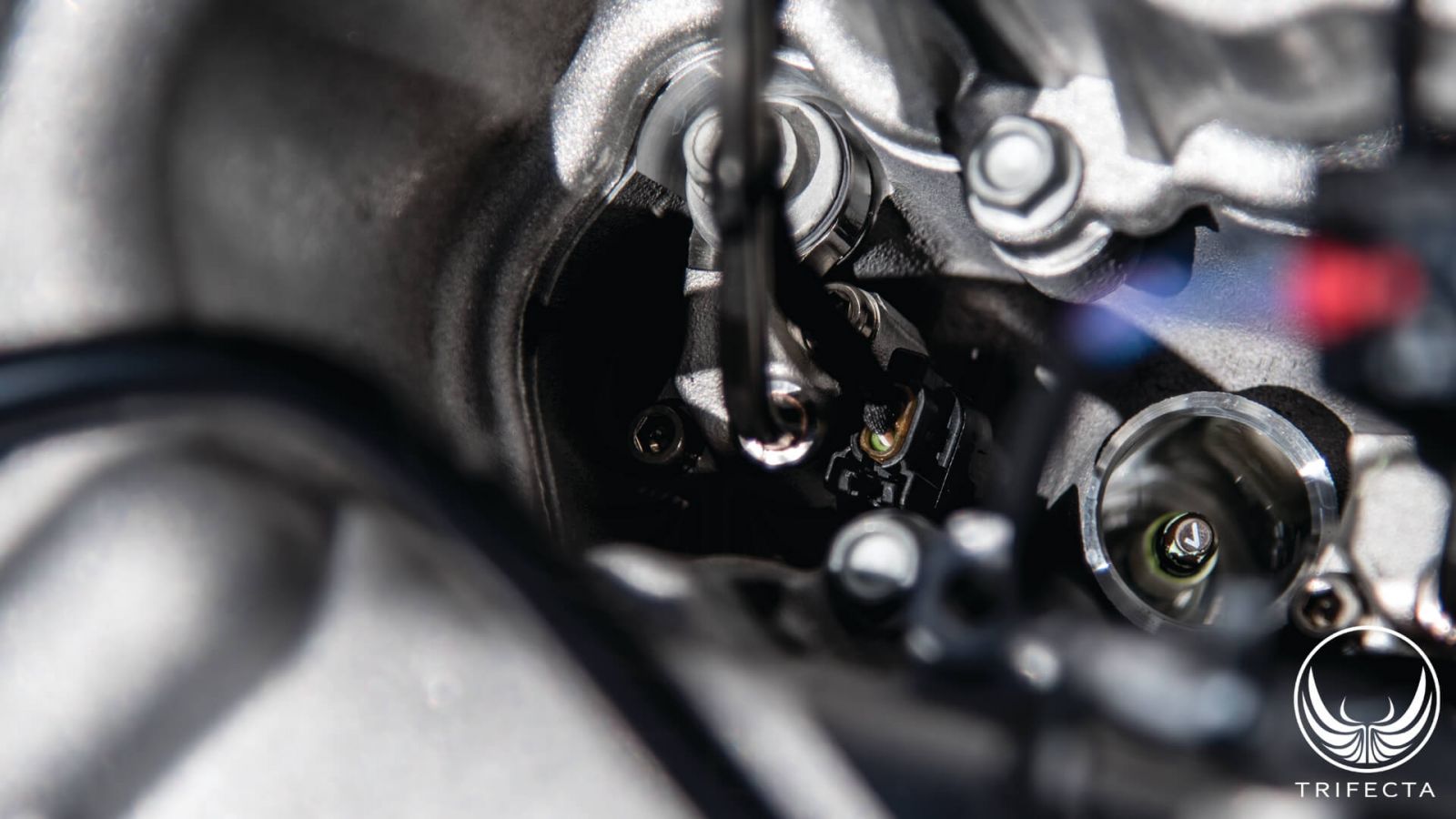
(1.4T LE2 Direct Injector in head)
Effects of aftermarket modifications on fuel demands
As previously mentioned, virtually any sort of power adder is going to increase fuel demands. After all, we're making more power generally by putting more oxygen into the engine, which in turn requires more fuel. On top of that, in many cases the fuel mixture has to be made “richer” in order to provide engine reliability at increased power levels.
With regard to TRIFECTA's products, the main concern generally has to do with recalibrating the ECM to increase the boost levels provided by the factory turbocharger(s) and studying the impact that will have on the fueling demands under a wide variety of operating conditions.
There can also be “downstream” effects of raising the boost levels on the engine. For instance, the ECM employs mechanisms to calculate the temperature of the catalytic converters. It also employs mechanisms to calculate the temperature of the turbocharger units, and in both examples here, may dynamically choose a richer fuel mixture in order to control the temperature of these components to avoid component failure, and/or engine failure (due to excess heat build-up in the pistons or exhaust valves).
As mentioned above, these vehicles are generally designed to operate under the most extreme conditions without exceeding the capacity of the fuel system – at factory power levels. At higher power levels, however, the vehicle's fuel system may have insufficient capacity to provide accurate and timely fuel delivery if any of these “downstream” enrichment mechanisms are triggered. In this way, the manufacturer is making it exceedingly difficult to run these engines at higher power levels under all operating conditions.
Symptoms of exceeding fuel system capabilities
On traditional MPFI engines, the symptom of exceeding the fuel system's capability would be simply that the ACTUAL air to fuel ratio would not equal (would be leaner than) the DESIRED air to fuel ratio. This can be quite disastrous because it would tend to happen when the engine was under the highest load. The leaning out of the fuel system under heavy load will almost certainly cause catastrophic failure of the engine due to the mixture being too lean.
On DI engines, this can happen also, but generally what happens is the start of injection angle is so far advanced that the ECM is trying to inject fuel while the exhaust valve is still open from the previous combustion cycle, and/or the ECM is trying to inject fuel while igniting the spark plug at the same time. This results in a terrible combustion pattern, extreme loss of power, and emission of black soot (unburned fuel) out the exhaust. This is, by no means a good operating condition, but the loss of power effectively reduces the likelihood of a major engine failure.
However, prior to the loss of power, soot, etc., a fuel system capacity issue can be identified by observing the fuel rail pressure. If the rail pressure starts to drop, it's because the high pressure pump's capacity is being exceeded, the low pressure pump's capacity is being exceeded, and/or some other component of the fuel supply system is not capable of providing the required fuel volume. Furthermore, the ECM has diagnostics for the high pressure pump – if the ACTUAL rail pressure is less than the DESIRED rail pressure for enough time, the ECM will set a trouble code, and generally reduce the available power (reduced engine power mode).
This is why there's a fixation on fuel rail pressure in the aftermarket, and rightfully so.
Resolving fuel system capacity issues
At the end of the day, fuel system capacity issues can be resolved by either reducing fuel demands, or increasing fuel system capacity.
Fuel demand reduction (without sacrificing power) can come about by either employing a leaner fuel mixture (generally not feasible) or the disabling of the “downstream” enrichment mechanisms. Some entities may offer “cat delete” pipes and feel that disabling the catalyst protection scheme is an adequate means to reduce fuel demand. We don't agree with this, however, as those schemes are put in place as a whole system (with or without cats) to manage engine component temperatures.
Another approach to reducing fuel demand is to simply lower the power levels. This is counterproductive, though, since the intent is to increase power demands.
The aftermarket has been slow to produce reliable high pressure pumps with a higher capacity. At the time of writing, there was only recently the introduction of an aftermarket high pressure pump, and only for the Gen 5 V8. There has been some work in the area of modifying the camshaft that drives the high pressure pump to either add more lobes (thus increasing the number of pump cycles per revolution), or increase the pump stroke length (thus increasing the volume of fuel pumped per pump event) by either reducing the camshaft lobe's base circle, or by increasing the lobe size. Any of these are fairly costly modifications, however, and provide only modest increase in fuel system capacity.
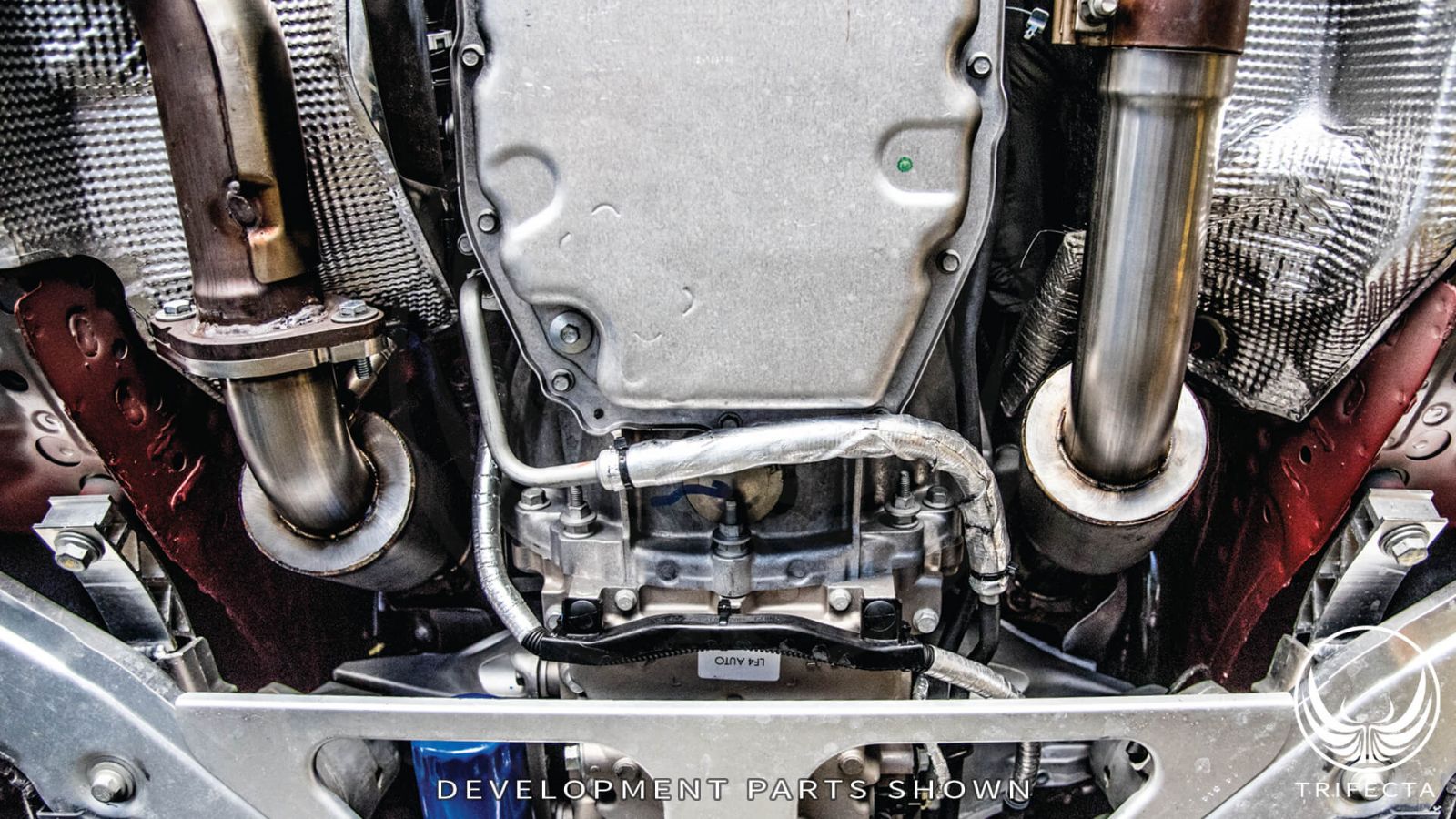
(2016 Cadillac ATS-V "Cat delete" pipe testing)
Active / dynamic rail pressure management
TRIFECTA has taken an innovative approach to dealing with potential fuel system capacity constraints. We recognize that the majority of people wishing to turn the boost (and, hence, power) up on their turbocharged DI engines wish also to have non-invasive and reversible modifications to their vehicles. As such, we have developed a software-based solution which resides in the ECM, as part of some of our recalibration products, which actively and dynamically manages the fuel demand vs the fuel system capacity.
After tirelessly studying the sources of “downstream” enrichment, we've engineered a solution that allows the ECM to adjust boost and power levels on the fly (hence, dynamically adjusting fuel demands) in response to the other factory-designed enrichment-protection mechanisms that may otherwise cause the fuel system capacity to be exceeded, without requiring the installation of any aftermarket hardware.
The factory ECM software, for as excellent as it is, does not provide any sort of construct or mechanism to offer this sort of control over the engine operation. Our embedded software experts developed a customized ECM operating system which analyzes the fuel demands the same thousands of times per second that the ECM does for other functions, and makes boost limit adjustments based on those fuel demands to prevent the fuel system capacity from being exceeded.
One of our calibration products to receive this technology is our 2016+ Cadillac ATS-V (with the 3.6L twin turbo V6 engine) calibration product. Being that it’s a “track car”, there may be special concern about whether this technology results in an inconsistent performing vehicle. However, at the time of writing, we had tested the vehicle exhaustively on the street, at the quarter mile track, and under loaded dyno pulls to over 150MPH without seeing a reduction in boost due to engagement of “downstream” enrichment mechanisms.
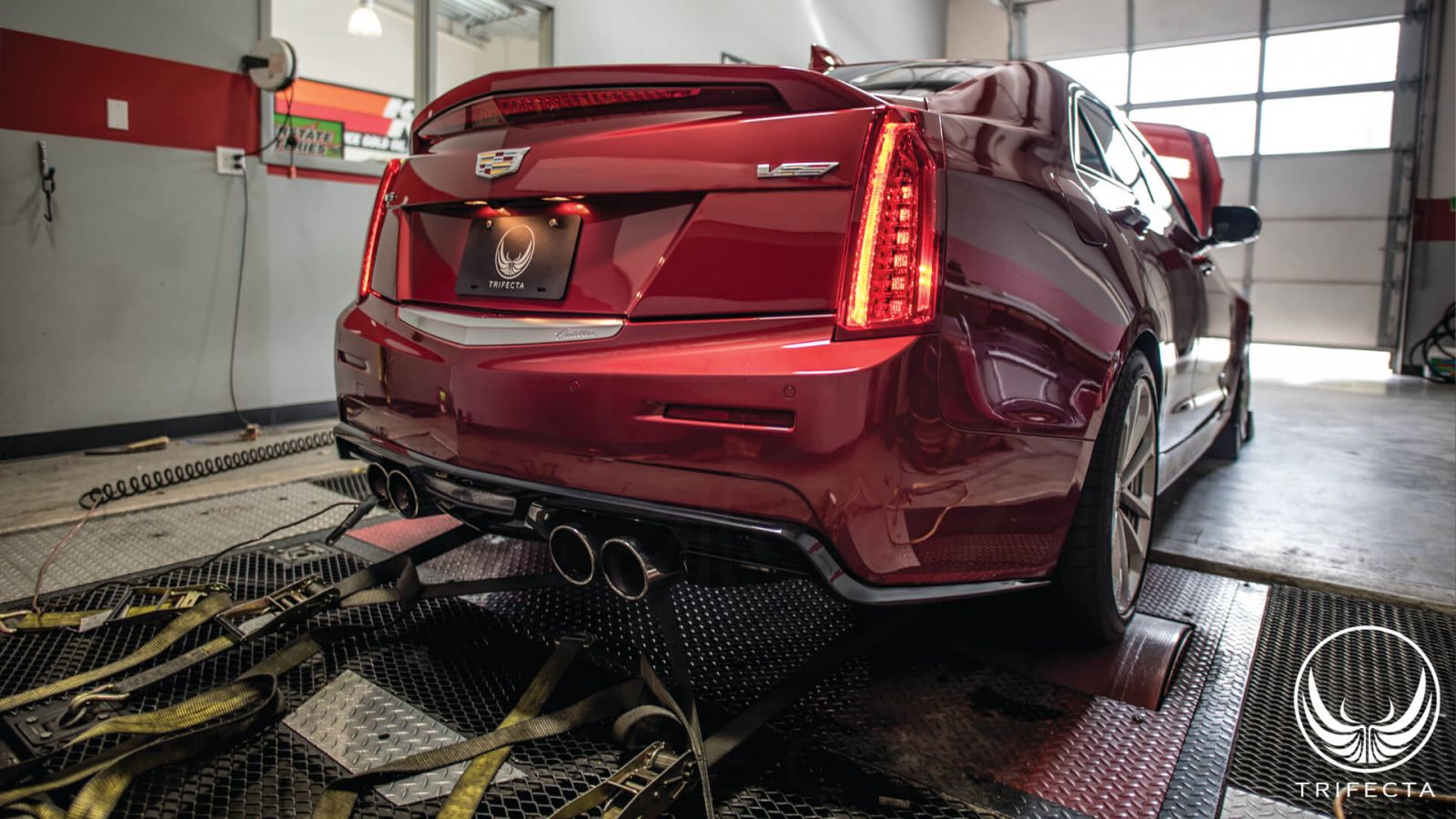
(Cadillac ATS-V undergoing dyno testing)
TRIFECTA Research & Technology Group






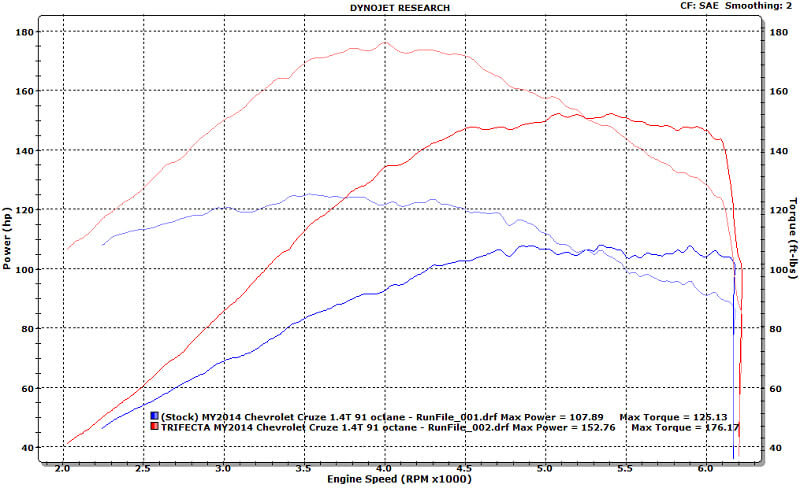
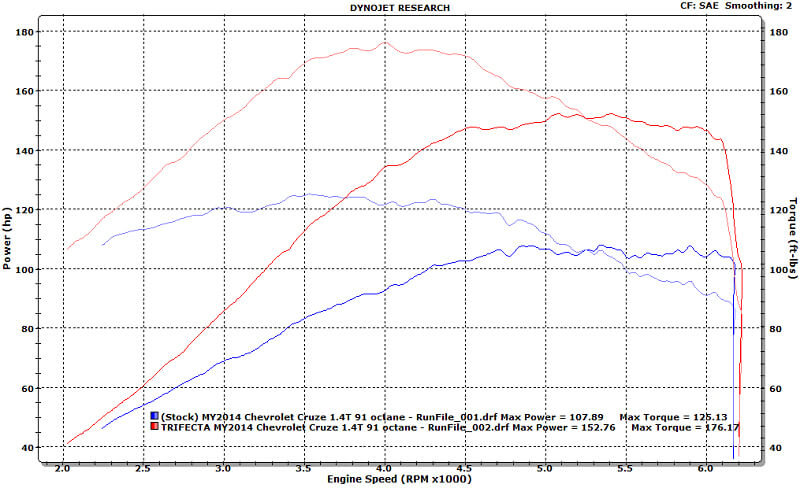





Recommended Comments
There are no comments to display.
Join the conversation
You can post now and register later. If you have an account, sign in now to post with your account.